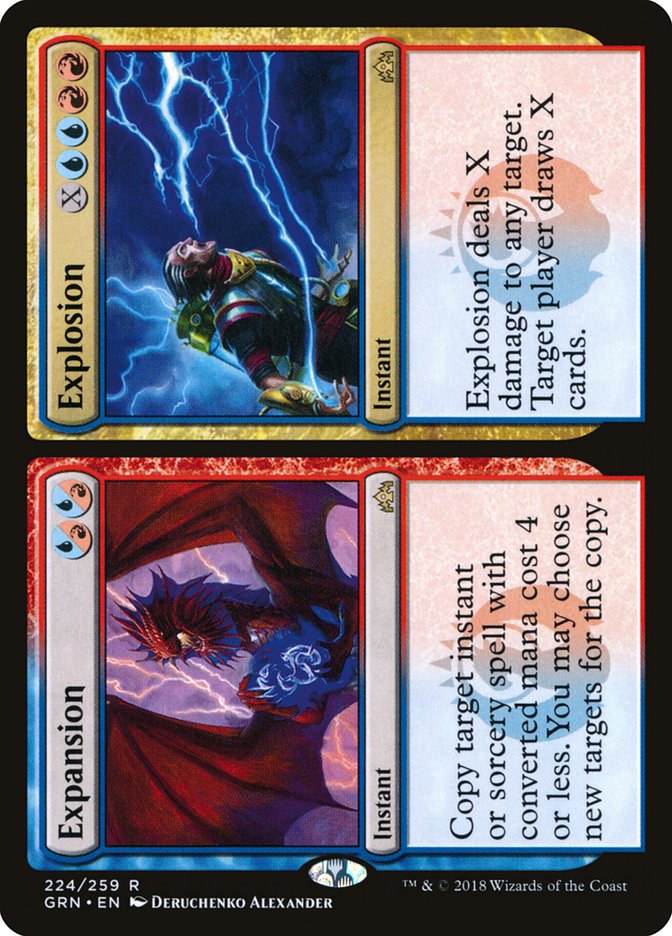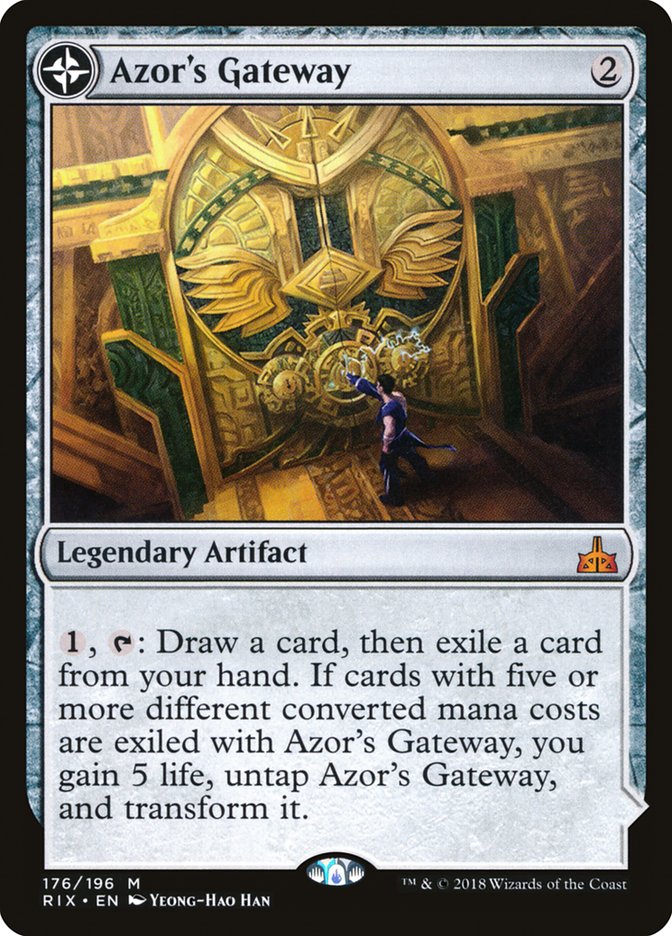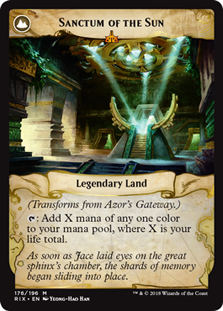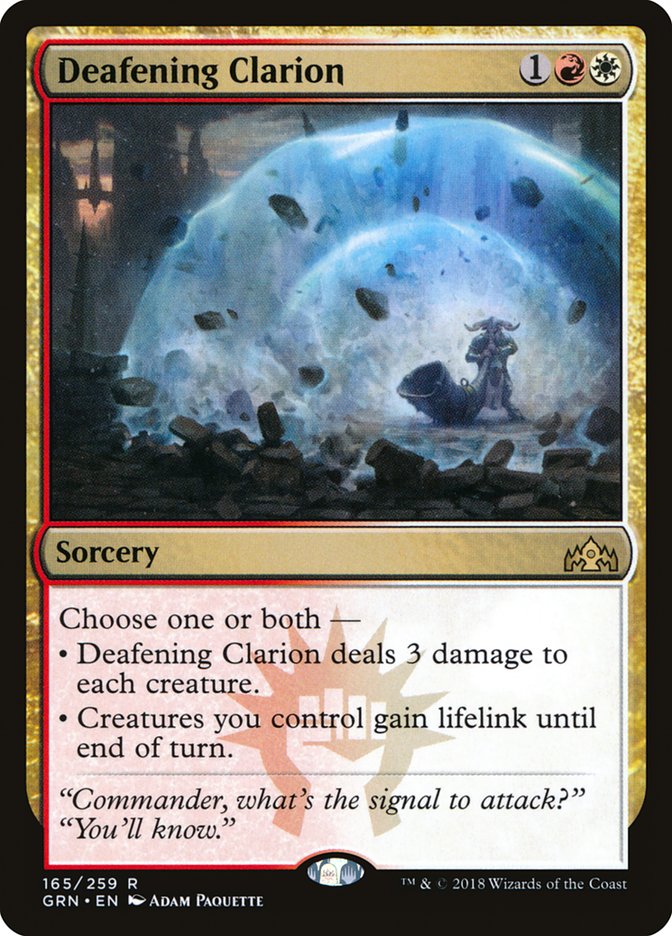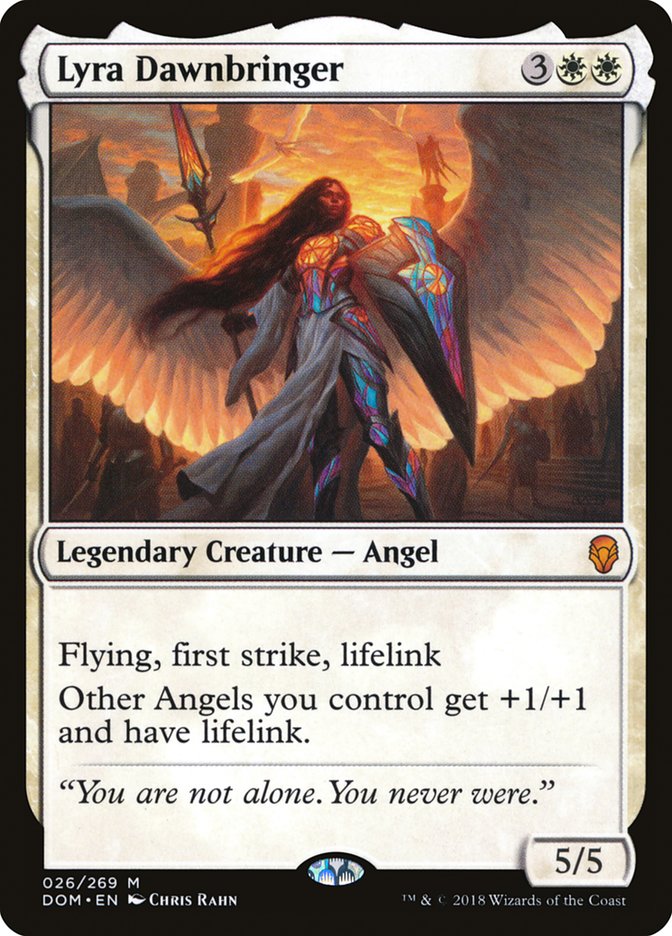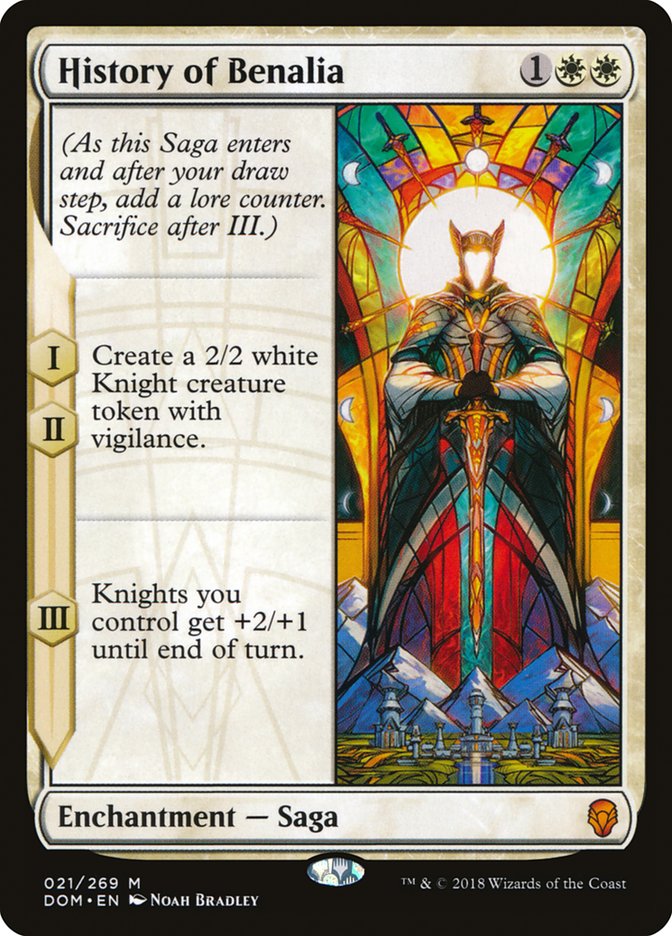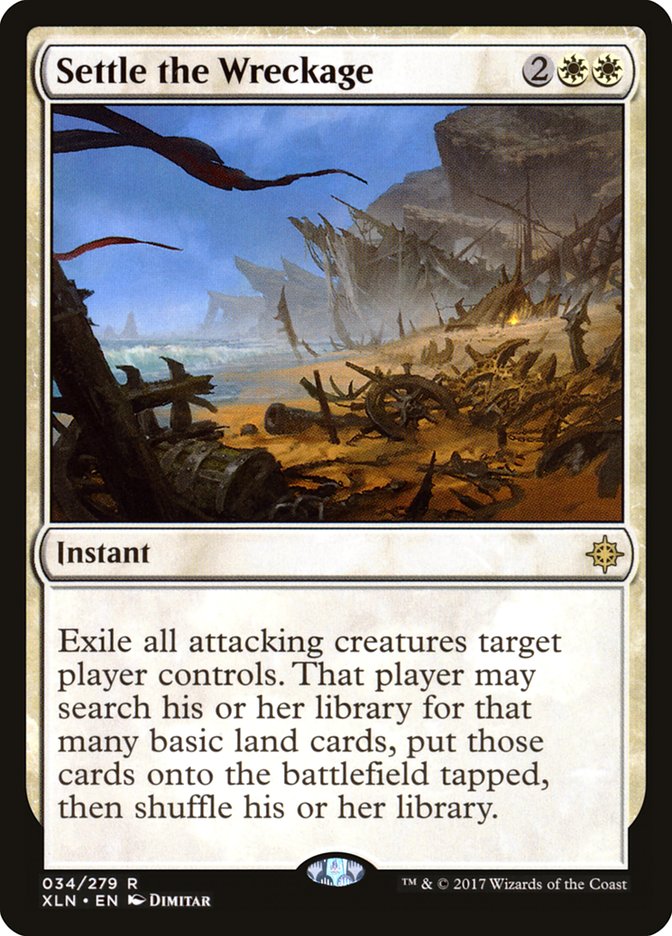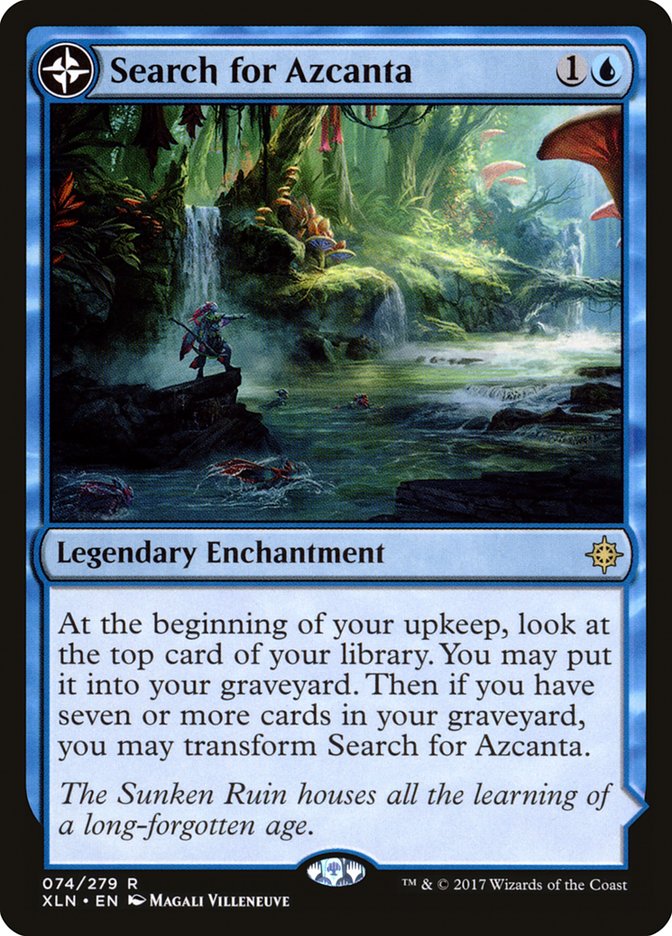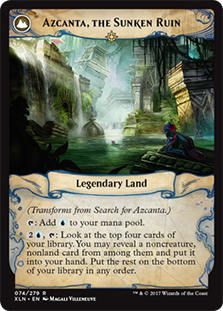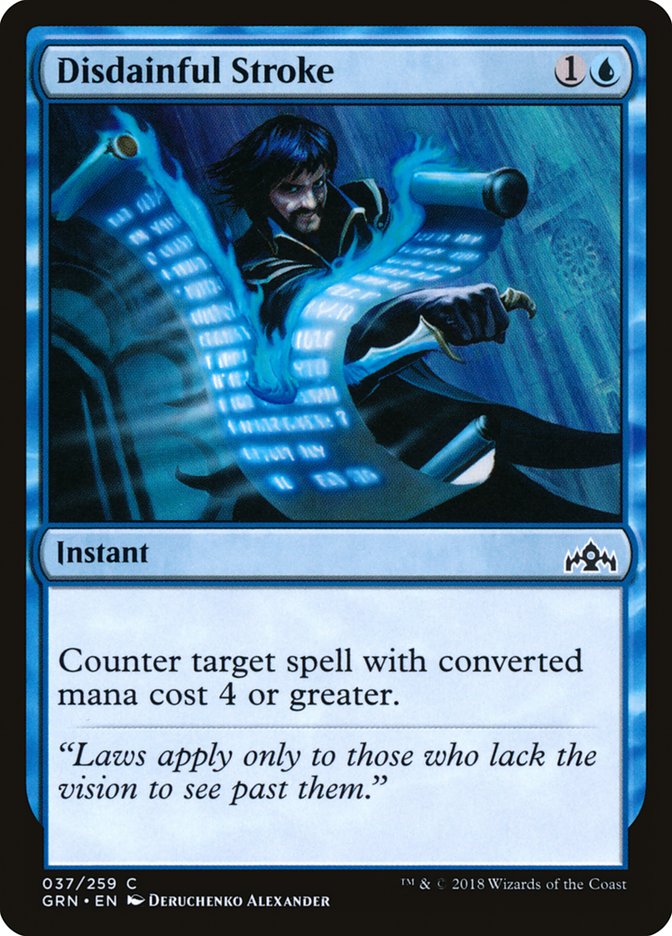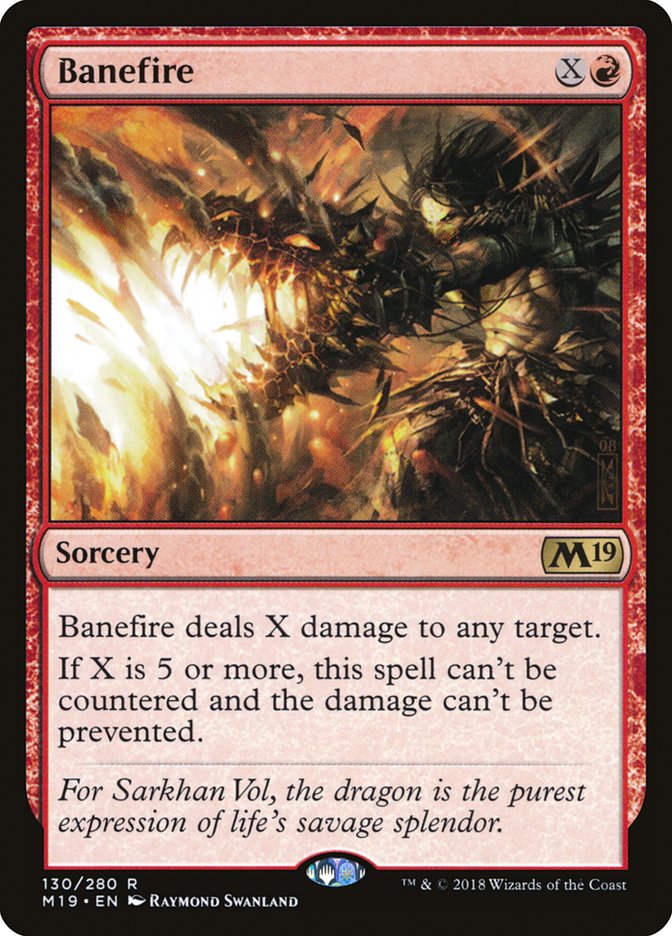This is an exciting article to write because it marks the beginning of my
weekly gig for your Friday viewing pleasure! Writing biweekly fits into my
professional/personal life well, but there are some obvious downsides.
Often, I would make updates to decklists, change my stance on the metagame,
or have some very important general feedback after my article was
published. I attempted to update my readers through social media, but that
isn’t the most effective way to reach the thousands of people that looked
to me for some control advice. On top of that, two weeks later I would want
to write about something much different than the previous topic. Writing
weekly offers some fixes for these issues. I get to continue to analyze
Standard, following up on a fresh take from the week before. Although the
content is new, it feels much more fluid than my previous, spaced out work.
A few articles ago,
I championed Esper Control
in Guilds of Ravnica Standard, offering some vital updates in our
What We’d Play article series and wrapped up the next week with some new
terrors that control players don’t want to tango with. Today, we’re going
to dive into some successful MTGO PTQ data, looking at a glorious Jeskai
Control deck that I had the pleasure of piloting for the last few days.
Planeswalkers (4)
Lands (19)
Spells (37)
- 3 Plains
- 5 Island
- 3 Syncopate
- 3 Settle the Wreckage
- 4 Azor's Gateway
- 4 Seal Away
- 4 Sinister Sabotage
- 4 Deafening Clarion
- 3 Chemister's Insight
- 4 Expansion
Sideboard

It feels so good to be able to consistently cast my spells! I will admit
that the spell quality does suffer when moving away from black-based
control options. There aren’t any replacements for Vraska’s Contempt, and
this pilot accepts their fate when a resolved planeswalker begins to wreak
havoc. The only option, the bread and butter of the deck, is Expansion. I
had my doubts with this card, but my teammate, Peter Ingram, was a true
believer. Anything that resembles Sphinx’s Revelation must merit some
vetting, which I wasn’t able to do until now.
Expansion is the reason to move into the Jeskai shard, giving you an
absolute bomb in the control mirror as well as pushing past the disruption
of the Golgari wave that has hit Standard. In
Fact or Fiction earlier this week,
I knew that Golgari had the tools to be a top contender of the format,
though the list that won the PTQ needed a lot of work. It seems to have
engulfed the Magic Online metagame now, joining the populated ranks of red
at the top tables. I hear a great deal of clamoring from Golgari fans that
they always defeat Teferi, Hero of Dominaria decks which I find
interesting, as I vanquish my Golgari foes most of the time. Unless the
game has changed completely, my dominating planeswalker control deck can
handle a bunch of mediocre but synergistic creatures. If their power play
was Rally the Ancestors instead of Gruesome Menagerie, maybe I would be
singing a different tune, but Teferi, Hero of Dominaria lines up just fine
against the two-power army of the midrange king, so sleeve up with
confidence.
Expansion is the key part of the Izzet split card that makes it a four-of
in the deck. Having a way to use your excess copies in the early game makes
it versatile enough to not stress when multiple copies are drawn. Removal
is a typical copy target in Limited, but in Constructed it’s a different
story. Jeskai Control doesn’t have any targets for the initial removal
spell, so it’s helpful against hand disruption, counterspells, and burn.
Explosion has a hefty mana cost attached, but it does play out very
similarly to Sphinx’s Revelation. Instead of the traditional lifegain from
one of my favorite spells of all time, it deals damage to any target. This
can result in life gain after a threat is removed from dealing you damage.
It isn’t as good as outright gaining the life, and it costs one more than
Sphinx’s Revelation, but it’s still reasonable enough in a format where
aggro doesn’t dominate. Without the powerful black removal spells, Jeskai
Control must have a way to handle cheap threats while keeping their life
total robust.
The real eyecatcher of the deck is Azor’s Gateway. A Limited superstar,
this two-mana artifact hasn’t seen much Constructed play. Even with
two-mana artifacts were hip, Treasure Map took the spotlight away from this
looting option. But that was before, when we didn’t want infinite mana to
burn our opponents to death. I know the primary purpose of Azor’s Gateway
is to filter draws, but its transformed side, Sanctum of the Sun, makes the
Explosion devastating. Even if your life total is dwindling, it still adds
a ton of mana to make the X equal a very large number. I was a believer of
this card combination when I first saw it on paper, and it didn’t
disappoint after playing with it.
Moment of Craving and Vraska’s Contempt allow control players to get back
in the game after an aggressive barrage by the enemy team, but this list
doesn’t employ similar cards. Instead of cleaning up each creature
individually, Deafening Clarion handles the initial wave on its own. Three
damage to all creatures is enough of an answer to Mono-Red Aggro and was
enough to get me on board. It’s the only tap-out card in the deck which
makes me feel a bit uncomfortable due to sorceries being kind of my thing,
but the rest of the deck plays the game at instant speed on the opponent’s
turn, breathing life into Settle the Wreckage as the premier battlefield
sweeper. Outside of burning enemy creatures, or cleansing the battlefield
all at once, Seal Away is the final removal spell that this pilot decided
they needed. After jamming multiple matches, I’m in complete agreement. The
removal is just enough to give you game against heavy creature decks game 1
and bring in additional Wrath of God effects as well as Lyra Dawnbringer.
Lyra Dawnbringer is still a ridiculously powerful control option in
Standard. You typically don’t want to include creatures in the maindeck of
builds like this, but it may become a necessity if Mono-Red Aggro takes
back the spotlight from Golgari. Lyra is a lights-out win condition that
makes attacking impossible, as well as puts the game out of reach with a
single attack. Red players typically need to bring in ugly removal spells
just to have a prayer against the Angel from white-based control decks.
This is even tough for midrange decks like Selesyna Tokens and Golgari
Midrange because sideboarding out removal is a necessary evil against
control opponents, but Lyra brings the maximum amount of punishment for
doing so.
History of Benalia is another punishing card for opponents that get light
with removal after game 1. I’ve never been a huge fan of this card when
used in Azorius Control, but times have changed. Having a few 2/2s is just
enough against the control mirror, as well as adding an additional avenue
for victory outside of Teferi, Hero of Dominaria against unsuspecting
midrange players. When you think of white-based control in Standard, both
mythics come to mind. Paired up with Settle the Wreckage and Seal Away,
this style of control has a real shot at taking on the metagame. Sadly,
there’s always a catch.
White-based control is the most predictable and easy to play around when
Duress is legal. A Golgari opponent seeing your Settle the Wreckage, taking
your Teferi, Hero of Dominaria, and having a decent battlefield presence is
a series that can make it tough to defeat. I’ve had the benefit of facing
much slower Golgari decks with a much higher emphasis on the lategame,
making it easier to defeat them. When Llanowar Elves starts to power out
tougher creatures to deal with, I’ll begin to sweat the Duress.
Even with Deafening Clarion, Mono-Red is tough. I have done fairly well
against them, but the burn can pile up after the creatures are dealt with.
Stealing games with Lyra Dawnbringer is always fun, but there are a few new
cards that create some nasty headaches. Cards like Risk Factor and
Experimental Frenzy make red a matchup I’d still like to avoid.
Important Changes
This version of Jeskai Control was a great primer and there are only a few
changes that need to be made. The most glaring issues I’ve found with the
deck is the sideboard. I can’t fathom a reason to have Search for Azcanta
not in the maindeck, as it’s one of the most crucial pieces of current
Azorius Control in Modern. I tend to give the benefit of the doubt to
Standard control spells if they’re played in older formats, especially one
that got better with the surveil and jump-start. Sinister Sabotage and
Chemister’s Insight make transforming the legendary enchantment that much
easier! Having an additional land pop up in the midgame is also very
powerful, and I can’t get away from that feeling. Putting additional Azor’s
Gateways, unnecessary removal, or Chemister’s Insight in the graveyard also
feels great. I have moved both to the maindeck, dropping one Azor’s Gateway
and one Syncopate. Syncopate has been instrumental in stopping pesky spells
from coming back, as well as counts as a one-mana spell for Azor’s Gateway.
Even though Azor’s Gateway loots, I found that four copies were a bit too
many.
The other sideboard card I wasn’t stoked to see was Essence Scatter. I
think Essence Scatter is a maindeck card, as it doesn’t perform better than
Disdainful Stroke in the sideboard games. Disdainful Stroke hits the
midrange creatures as well as planeswalkers. With Essence Scatter, it
doesn’t have the same range and it isn’t a card you will bring in against
aggressive decks. I added one copy to the maindeck over a Deafening
Clarion, which has been moved to the sideboard. With two Search for
Azcanta, the looting form Azor’s Gateway, and some Settle the Wreckage
action to fall back on, having three copies has been enough.
The one Banefire has been hilariously great against the control mirror, so
I left that one in. The deck has enough tools to deal with the mirror
already, but I’m a sucker for a hate card like this one. Lucky for us,
Expansion doesn’t hit high converted mana cost cards or this wouldn’t work
out. The sideboard needed a few additional one-ofs to handle unique threats
in Standard, so I made some necessary changes to address some of the
weaknesses of the deck. You’ll find the final version that I’ve been
battling with below and so far, I’m very impressed. Esper Control is still
pretty good, but the manabase has made me table it for now. There is no
doubt in my mind that it’ll be the best option with the additional dual
lands, but let’s give this red deck a chance to shine in the meantime!
Planeswalkers (4)
Lands (27)
Spells (29)



